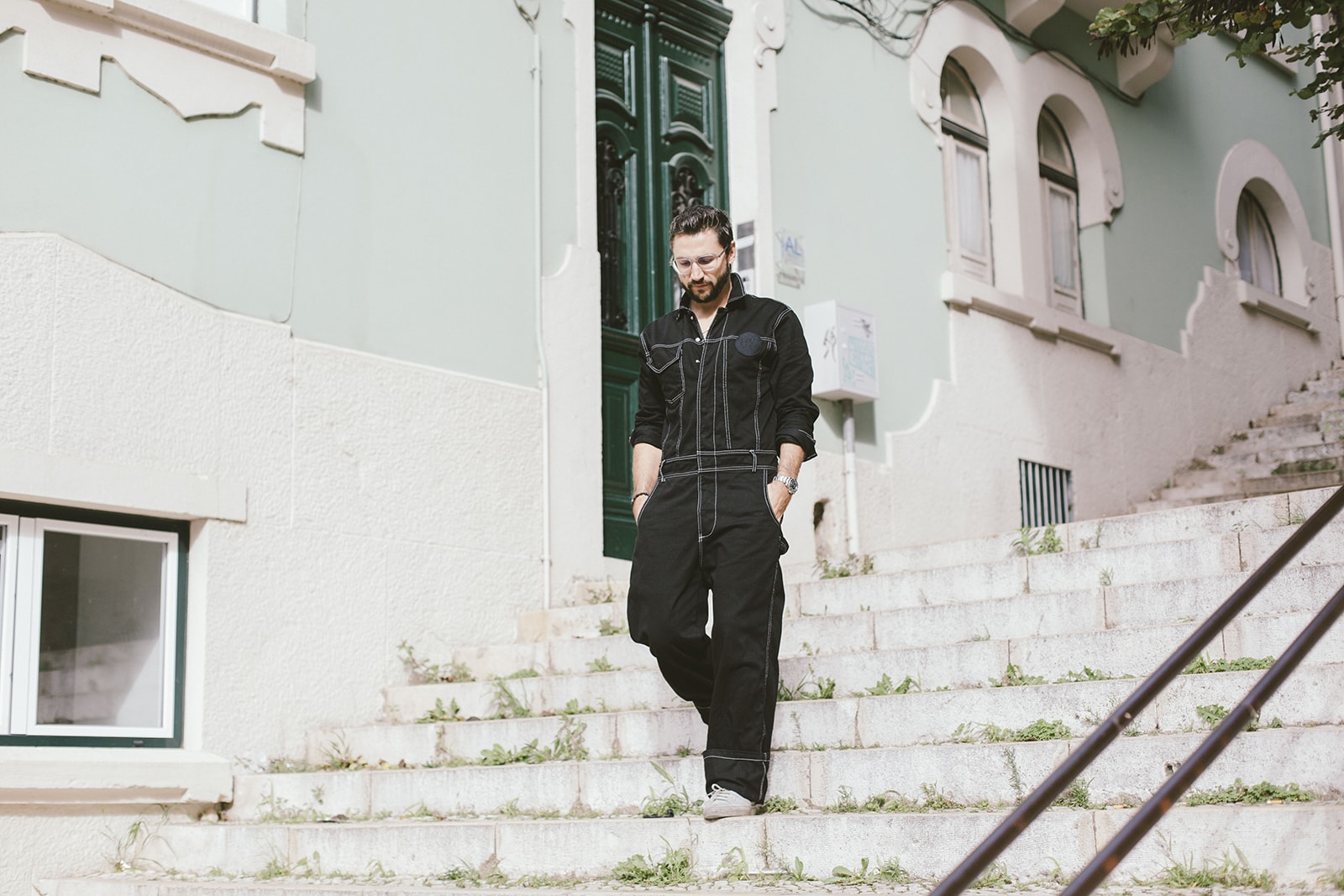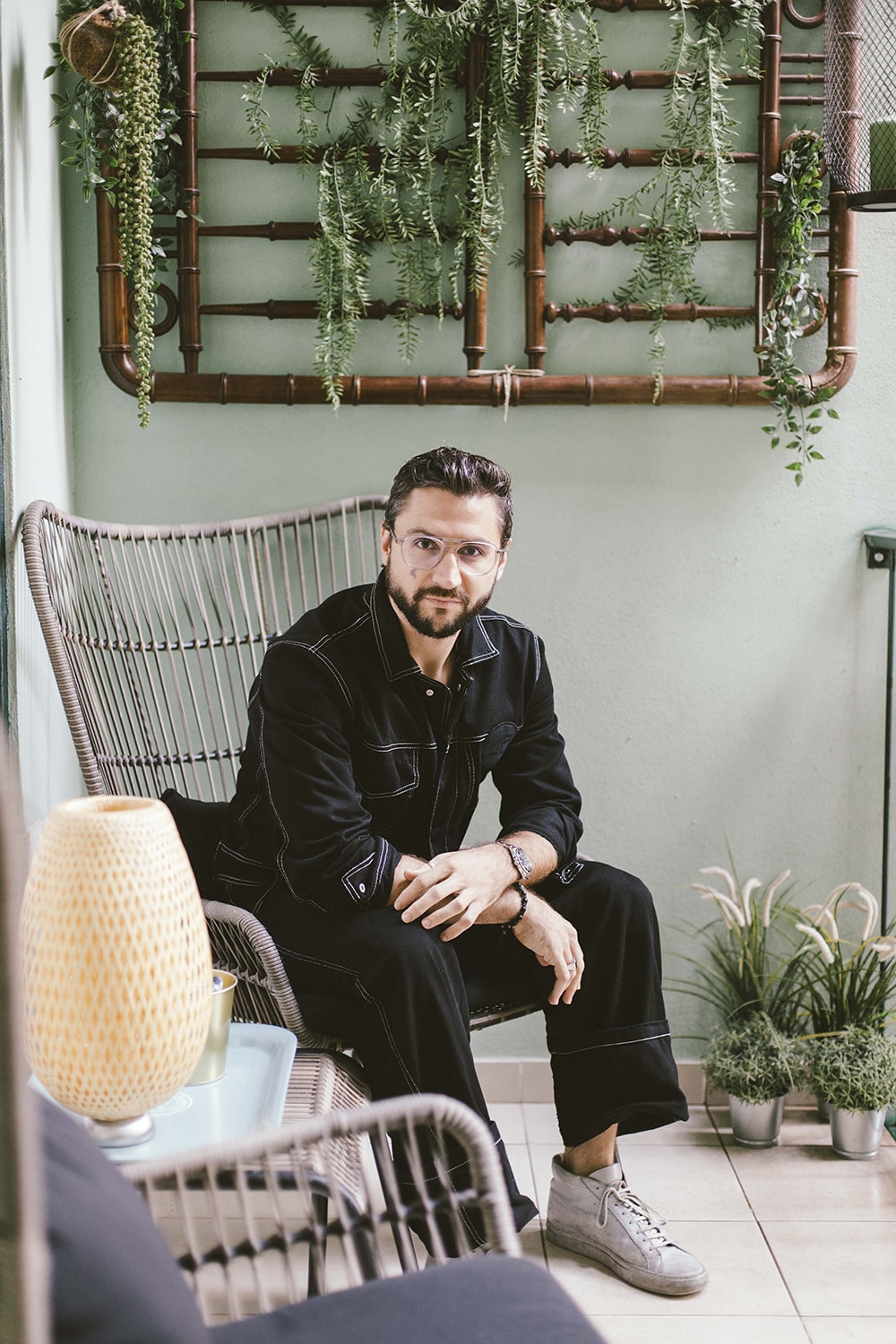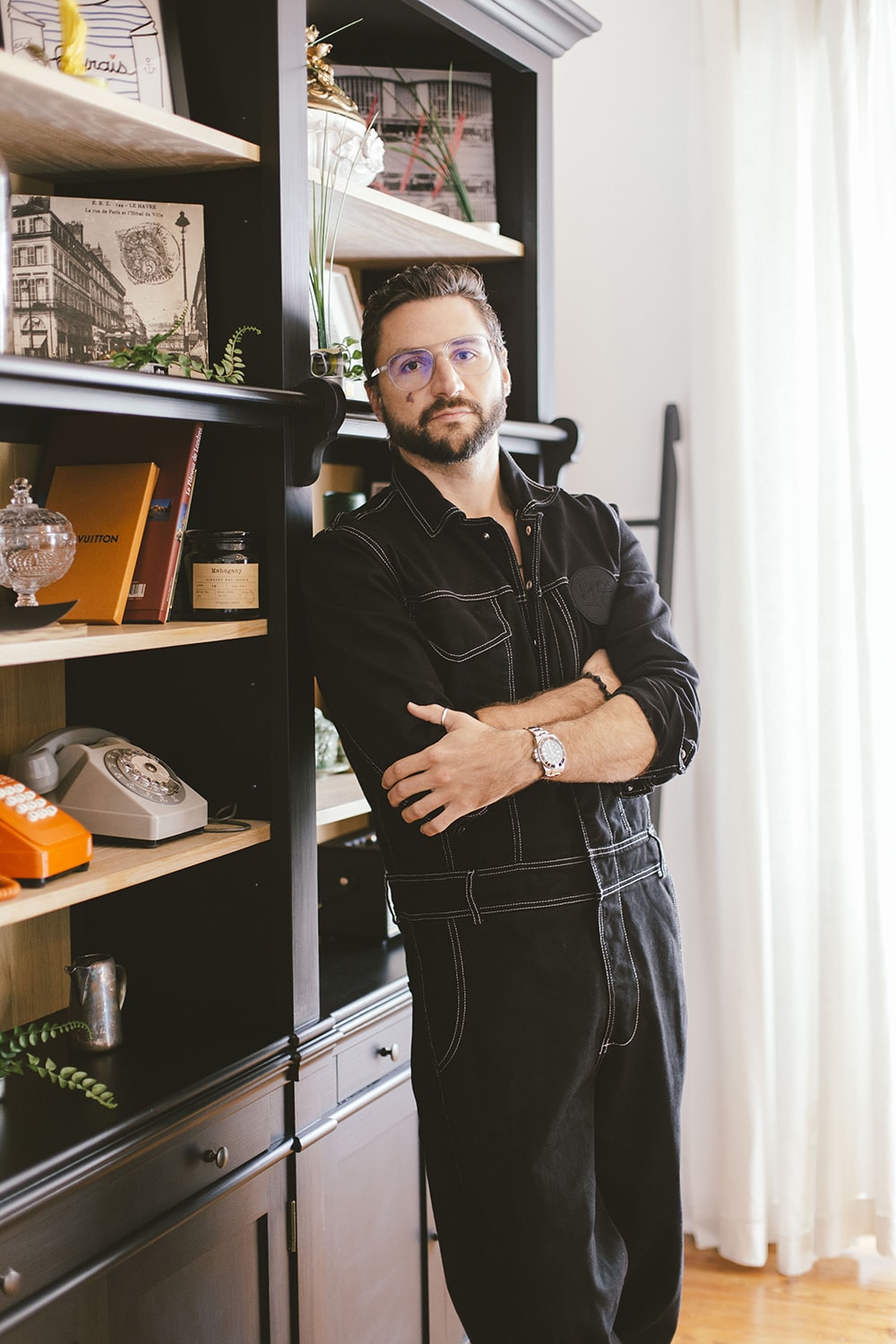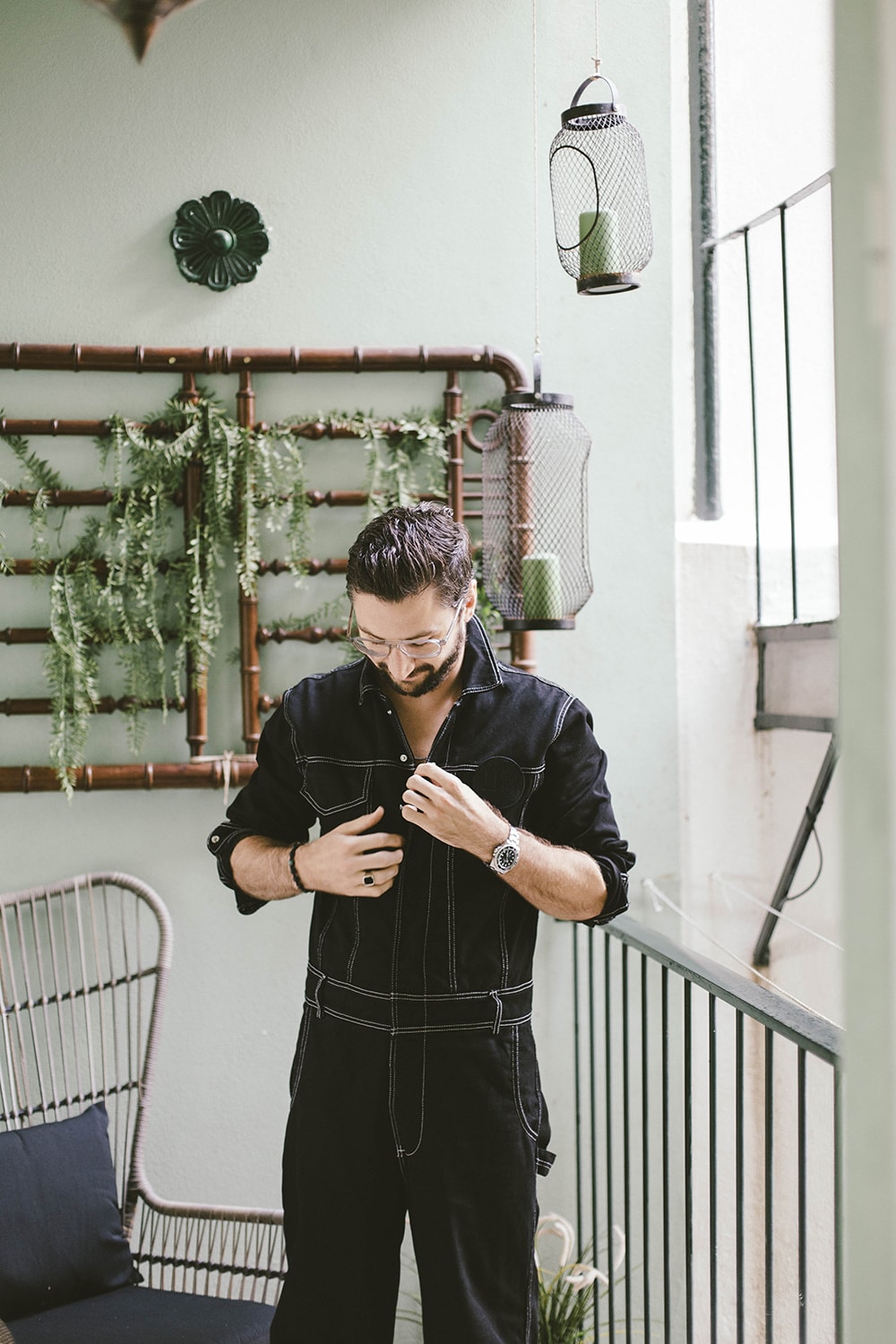
Studio Visits with Stan Parish
#INTERVIEW | WORDS: Mariana Matos | PHOTOS: Cristiana Morais
Studio Visits with Stan Parish
For our first STUDIO VISITS, we sat down with the American author Stan Parish. A “friend of a friend” situation turned into a great chat about travelling, life changes, and all things creative.

Gonçalo – So who is Stan Parish? We must introduce you to the HIBU household!
Stan – I’m from the United States—New Jersey, specifically. I spent most of my youth there, so I consider it my spiritual home. I feel like Europeans know New Jersey mostly from “The Sopranos,” which is not a bad thing. Anyway, I worked in New York for twelve years as a writer and editor for all kinds of magazines and newspapers—The New York Times, GQ, Esquire, Bloomberg, Vanity Fair. Four years ago I started “The Future of Everything” at The Wall Street Journal, which began as a magazine and grew into a podcast, newspaper section, newsletter, and live events around the world. I published my first novel, “Down the Shore,” in 2014, and I was writing a thriller while working at the Journal. The book sold last year, and in March I quit my job to work on the edit. I quickly realized that I didn’t really need to be in New York, so I packed a bag and moved to LA for the Summer, and then to Europe. I’ve been here for three months, but the plan is to go back to LA in January and hopefully do some TV writing before the new book, “Love and Theft”, comes out in July 2020.
Gonçalo – You were born in Texas, raised in California, and settled in New Jersey. Do you think that being a part of all these different places helped you nurture your self-expression and style?
Stan – I was six months old when I left Texas, so I don’t remember any of it. California had a pretty big impact—I love surfwear and my wardrobe is full of Levis Vintage Clothing, classic pieces from their archive. I went to prep school in New Jersey and college in Connecticut, and my personal style was pretty East Coast as a result. After college, I worked as an editor at GQ for five years, and wound up learning a lot about clothes and fashion, just like I discovered a lot of the things I wear today: Common Projects sneakers, Crockett and Jones wingtips, the classic steel Rolex, or brands like A.P.C. and Acne Studios. On the other hand, The Wall Street Journal was a pretty conservative environment, and I wore a lot of suits to work. As an editor-in-chief, I was in a lot of meetings with top people at the company and, being kind of young for that job, I wanted to at least look like I knew what I was doing.
Gonçalo – I think I could never work in a place that requires a uniform. I find it too repressive. Especially when you’re a creative, you should be able to move freely.
Stan – It’s nice to wear denim and t-shirts—and denim jumpsuits—during the week. But I do love putting on a suit once in a while, just not every day.
Gonçalo – Still on the fact that you moved around quite often: how did that interfere with your writing style?
Stan – I’d say it defined my style. Living all over the country as a kid showed me how much is out there. I spent most of my 20’s writing travel stories for magazines, and I’m still amazed that someone was willing to pay me to do that. My writing has always been heavily inspired by my travels, whether it was fiction or nonfiction.
Gonçalo – In your personal case, would say that art imitates life?
Stan – Most of my work does. It’s always been important to me to draw from things that I’ve seen and experienced. To be able to take the reader where I’ve been was crucial in nonfiction, and just as important as in my novels.
Gonçalo – As a professional communicator, do you often feel that people misunderstand you?
Stan – All the time. But you can’t worry about that because you can’t control the way people interpret things. I’m sure you know this as a designer. The way people react to your work has everything to do with them, and very little to do with you. So, being misunderstood is not something that you should spend too much time thinking about if you want to keep creating.



Gonçalo – Can you tell us a bit more about your writing process?
Stan – It changes constantly. Sometimes I write at night—10 p.m. to 6 a.m. is my favourite shift—and sometimes I write in the morning. The timing is intuitive. It’s about listening to myself and figuring out what I need in that moment, but I always approach it as a job, which it is. Whether the ideas are flowing or not, you need to sit down and write something, impose some discipline. If you only work when you feel inspired, you won’t do much work.
Gonçalo – Do you believe in writer’s block? How do you feel about it?
Stan – Lack of inspiration is a real thing, but working through it is important. And the simple act of sitting down at your laptop when you have nothing to say can change your orientation and how you feel about the work. Just write. Don’t worry about how it reads or where it’s going. I’ve written stuff that I thought would be an exercise to loosen up my mind, but which ended up in a novel.
Gonçalo – Tell me if I’m wrong, but I feel like the process of writing a book is almost the same as developing a collection: you spend months and months choosing fabrics, researching, testing patterns, and when you’re about to finish, you start questioning the whole thing, if you still like it, or even if it’s good enough. I think I can speak for Marta too.
Marta – You end up doing it for way too long, chasing the very same things every day, which is exhausting. But to be honest, I think it took me more time to develop the CRU-L collection because I wanted to go for something different from what I had ever done before: I started to work with factories, instead of the usual seamstress work in Lisbon. It was a whole new world that made me feel insecure at times, and question everything around me and the working process.
Stan – So why did you decide to restart the brand?
Marta – We started out as a brand that was genderless, so everything was made for everybody but in a super conceptual way. We ended up feeling the struggle of working solely for runway samples that probably weren’t commercial enough. 3 years later and working by myself, I was trying to figure out how I could make HIBU more wearable and bigger in terms of scale, and here we are.
Stan – So this is your first truly wearable collection?
Marta – Yes.
Stan – I feel like you’ve overcome those challenges and cracked the code. This collection is very distinctive but also completely wearable. I’ve been wearing this jumpsuit for 5 days, no joke. There’s nothing generic about it, but nothing too fashion-y either. I’m sure it looked great on the runway, and people on the street have complimented me on it every day.
Marta – I’m glad you’re enjoying it, it looks great on you!
Gonçalo – Back to you Stan, as we are wrapping up this interview – you’ve been traveling for three months now, so what’s the one essential you keep leaving behind?
Stan – I’ve lost so much stuff on this trip, but the one thing I keep losing is my beloved beard trimmer, the Wahl Lithium Ion, which is the best in the world. I’m currently on my third. I lose something new in almost every city, but I kind of accepted that I was going to leave a trail of belongings when I started this trip, so I’m trying to be Zen about it. I just remembered that I’ve lost three bathing suits…
Gonçalo – And what’s the one disposable thing that you always end up packing?
Stan – I have to say, I don’t really like disposable things. Almost everything I own is reusable and built to last. Other than dental floss, everything in my bag was designed to last a long, long time.
Gonçalo – Last but not least, but slightly off-topic: how do you feel about people that start clapping when the plane finally lands?
Stan – I don’t personally clap when a plane lands, because I don’t feel compelled to do that. But air travel is a miracle, and if people want to celebrate survival or the mystical experience of shooting through the sky in a giant metal tube, I have no problem with it.
